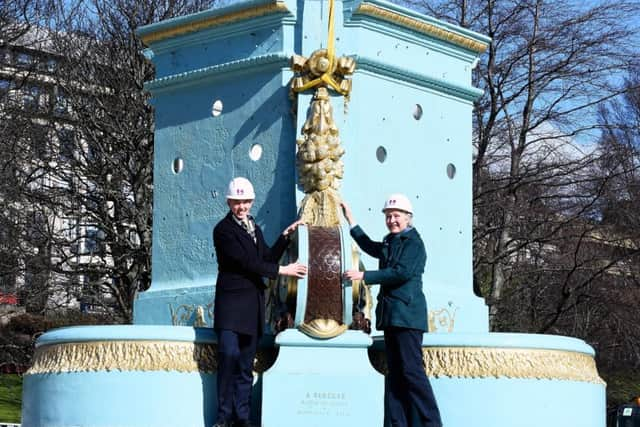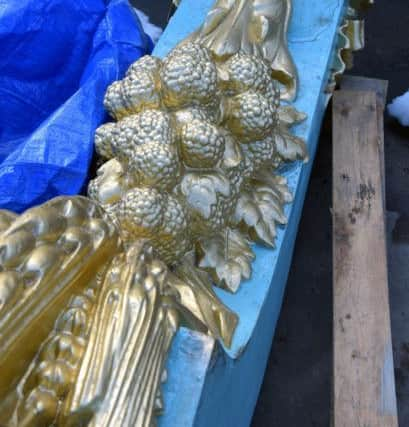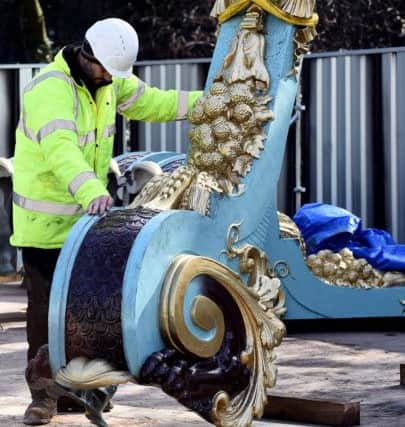Vibrant new colour scheme for restored Ross Fountain
and live on Freeview channel 276
The A-listed fountain was removed from its home in the centre of Princes Street Gardens last summer as work on a £1.6 million refurbishment programme spearheaded by the Ross Development Trust got under way.
And now, new images showing renovated buttresses and low parts of the cast iron structure with an eye-catching new colour scheme have been released.
Advertisement
Hide AdAdvertisement
Hide AdThe new bluish-green and copper colour scheme, which project chiefs say “pays homage” to the French ornamental work of the 19th century, is based on the fountains at Place de la Concorde in central Paris.


Officially called “verdigris bronze”, the colours represent a move away from the traditional all-gold look previously adopted by the monuments.
However, a spokesman for the trust explained the true colour of the original fountain, which arrived in the city in 1872, may never be known.
He said: “Research has eliminated any real clues to the original colour but we believe it had originally undergone a process called bronzing. It is now accepted that this mix of linseed oil and bronze powders was short lived; first tarnishing then failing, leaving a dark rust coloured finish; more by default than design.”
Advertisement
Hide AdAdvertisement
Hide Ad“However in homage to that bronze finish we have aimed to create a verdigris bronze effect, in the French style of the time, when there was a transition from bronze to cast iron in public monuments. This effect was first used on a number of French fountains, which have recently been restored in the same manner.”


He added: “Our fountain uses a colour that suggests the subtle verdigris effect of bronze; less green than copper. The detailing suggests the ‘polished’ effect on worn surfaces.”
He continued: “The gold detailing pays homage to the colour the fountain took on in recent years and the brown on the skin tones and other animal-like parts suggests newly patinated parts, treated traditionally with liver of sulphur.”
The Ross Fountain was originally made in France at a famous foundry run by Antoine Durenne at Val d’Osne, in the Haute-Marne region.
Advertisement
Hide AdAdvertisement
Hide AdBut Edinburgh gunmaker Daniel Ross spotted the ornate monument at a show at the London International Exhibition of 1862.


In a philanthropic act, he gifted it to the Capital, although it took seven years before the components were shipped to Leith in 1869.
When it was first installed, the fountain provoked the wrath of Dean Ramsay, minister at nearby St John’s Episcopal Church, who labelled its nude female figures “grossly indecent and disgusting”.
The fountain remained in place in West Princes Street Gardens for more than 150 years, before it was removed in July last year to repair damage caused by leaks.